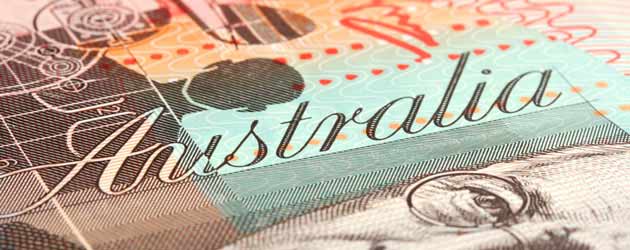Pound Sterling to Australian Dollar (GBP/AUD) exchange rate strengthened to 1.87 on Thursday as a stronger US Dollar weighed upon the ‘Aussie’ and market attention focused on the Bank of England’s upcoming policy meeting.
Pound Sterling to Australian Dollar (GBP/AUD) exchange rate advanced to 1.86 on Thursday as positive UK PMI continued to support Sterling and as weaker than forecast Australian PMI data weighed upon the ‘Aussie’.
On Wednesday the Pound to Australian Dollar (GBP/AUD) exchange rate rallied as Australian GDP data released by the Australian Bureau of Statistics showed that the country’s gross domestic product rose 0.3% in the third quarter, less than the expected 0.7% increase and down from a growth rate of 0.5% in the three months to June.
On Tuesday the Pound to Australian Dollar exchange rate continued to trade in the region of 1.85 but remained softer following the release of disappointing UK construction data and the Reserve Bank of Australia’s decision to leave interest rates unchanged.
The Pound to Australian Dollar exchange rate hit a session high of 1.872
At the start of the week the Pound to Australian Dollar (GBP/AUD) exchange rate continued to trade higher as the UK currency continued to receive support from positive manufacturing PMI data and the ‘Aussie’was weakened by falling iron ore and oil prices.
The Pound Sterling to Australian Dollar (GBP/AUD) exchange rate pushed higher on Monday and more gains are forecast as the commodity based ‘Aussie’ was weakened by more disappointing data out of China and tumbling iron ore and gold prices. Stronger than forecast UK manufacturing PMI data also added support to the Pound.
Earlier in the session the ‘Aussie’ had received some support after data released by the Australian Bureau of Statistics showed that company operating profits in the ‘Land down under’ increased by 0.5% in the third quarter of the year. The figure was better than the -1.2% decline forecast by economists.
Any support offered by that data was soon lost as a report published by the National Bureau of Statistics China showed that China’s manufacturing purchasing managers index (PMI) fell to a reading of 50.3 this month, down from the preceding months figure of 50.8. The separate HSBC compiled manufacturing PMI meanwhile showed that the sector stagnated at 50.0 for a second consecutive month.
More Declines Forecast for Australian Dollar Exchange Rate
Tumbling iron ore prices also weakened the ‘Aussie’ and has increased pressure on the Reserve Bank of Australia to take action and possibly cut interest rates. Iron ore is Australia’s most traded commodity, contributing more than $1 out of every $5 of export income.
‘The risks for the Australian economy are tilting to the downside. There’s a growing prospect that the RBA may well need to cut interest rates as analysts are underestimating a collapse in commodity prices that is likely to be deeper and broader than expected,’ said Guy Bruten an economist at Alliance Bernstein.
Pound Sterling to Australian Dollar Exchange Rate hit a session low of 1.862
Economists are now betting that there is a 64% chance that the RBA will cut interest rates by a quarter of a percent over the coming 12 months.
Against the US Dollar, the Australian Dollar fell to its lowest level in more than four years.

